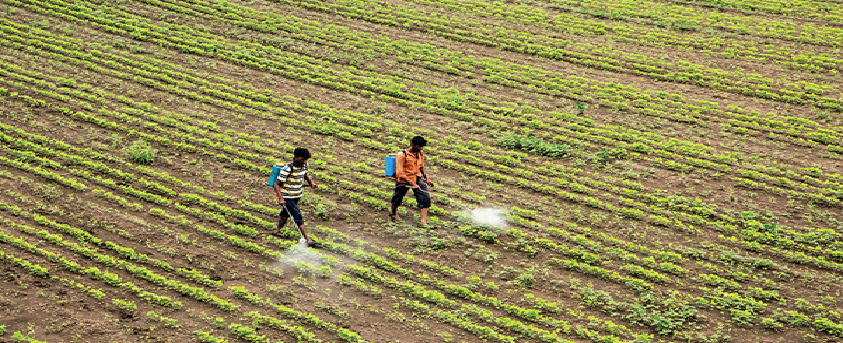Improvements in Agri-credit System can Revive Agriculture
15, Feb 2022

Prelims level : Economy
Mains level : GS-III Economy - Changes in Agri-Credit System
Why in News?
- The Budget Speech as well as the Economic Survey 2021-22 Recommended that priority should be given to crop Diversification and allied sectors including horticulture, organic Farming, Dairying and Fishing to increase farmers income.
Focus on Increasing the Institutional Credit:
- The Government has increased the agricultural credit target to Rs 18 lakh crore for 2022-23 from Rs 16.5 lakh crore for the current fiscal, with an allocated subsidy of Rs 20,870 crore.
- To enable small farmers to shift from wheat and paddy or improve their income through allied sectors, they must have access to institutional credit at reasonable rates of interest.
- Decreased quality and impact on agriculture: While the volume of credit has grown over the decades, its quality and impact on agriculture has deteriorated.
- Over the years, the growth rate in the agriculture sector has been falling.
- Agricultural credit has become less efficient in delivering growth.
- Small and marginal farmers left out
- Low penetration: In the last 10 years, agriculture credit increased by 350 per cent, but it has not reached even 15 per cent of the 12.56 crore small and marginal farmers.
- Agricultural households with the lowest landholding (up to two hectares) get only about 15 per cent of the subsidised loan from institutional sources.
- As per the Situation Assessment Survey of Agricultural Households by NSSO, the share of institutional loans increases with an increase in land possessed.
- The bulk of subsidised agri-credit is grabbed by a handful of big farmers and agri-business companies.A loose definition of agri-credit has led to the leakage of loans at subsidised rates to large agri-firms.
- One of the main reasons for this diversion is that subsidised credit disbursed at 4 per cent to 7 per cent rate interest is being refinanced to small farmers and in the open market at interest rates up to 24 per cent.
Way Forward:
- Institutional Development: The flow of agricultural credit has not been uniform across states.
- Institutional Development across states is a priority area for equitable flow of subsidised credit.
- Close coordination between State and NABARD: State governments should work in close coordination with the banking system for the promotion of more Joint Liability Groups (JLGs) as per NABARD guidelines to ensure that formal credit reaches financially-excluded farmers.
- States should monitor credit flow: State governments should regularly monitor credit flow.
- Low Interest Rate: Four, the rate of interest for long-term loans should be kept at 4 per cent.
- List of farm related activities: A comprehensive list of all farm-related activities should be prepared by the banks in consultation with NABARD, agriculture experts, farmers and administration.
- Simplify eligibility criteria: Eligibility conditions/criteria for providing agriculture loans should be further simplified and liberalised.
- The repayment schedule should be according to the farmers’ capacity.
Conclusion:
- Credit is critical for achieving higher farm output. Institutional credit will help Delink Farmers from non-institutional sources, where they are compelled to Borrow at Usurious rates of Interest.






